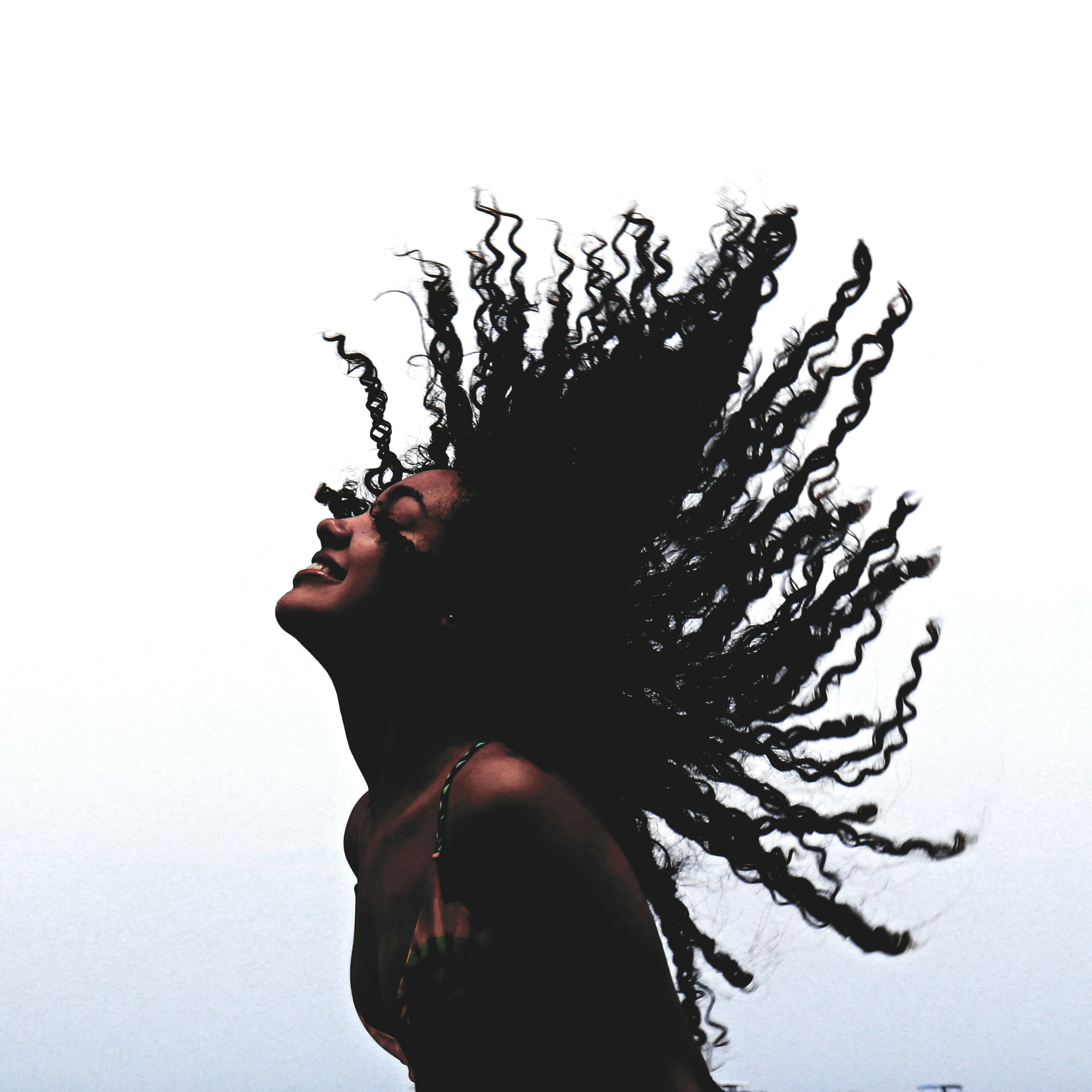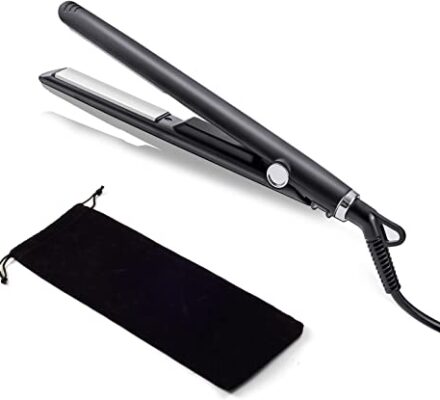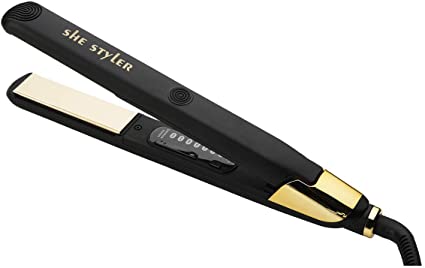Sleek, smooth, and effortlessly styled hair – the allure of a hair straightener is undeniable. However, amidst the convenience and glamour, it’s easy to overlook the potential risks associated with frequent use. Heat styling tools, especially hair straighteners, have the power to transform your look, but they can also lead to hair damage if not used with care and consideration.
In this comprehensive guide, we delve into the world of hair straightener damage prevention. Whether you’re a seasoned styling pro or new to the world of heat tools, understanding how to shield your locks from harm is paramount. From choosing the right straightener for your hair type to adopting smart styling practices, we explore a range of strategies that will allow you to achieve that coveted sleekness without compromising the health of your hair.
Join us as we uncover the science behind heat damage, demystify common misconceptions, and provide you with a toolkit of tips and tricks to maintain the lustrous, vibrant hair you deserve. Your journey to beautiful hair starts here, with knowledge that empowers you to wield your hair straightener confidently while safeguarding the natural beauty of your tresses.
Choosing the Right Hair Straightener
Consider your hair type
When choosing a hair straightener, it’s essential to consider your hair type. Different hair types require different levels of heat and care. If you have fine or damaged hair, you’ll want to choose a straightener with adjustable low heat settings to protect your hair from excessive heat damage. For normal hair, a straightener with medium heat settings should work well. And if you have thick or coarse hair, look for a straightener that can reach high heat temperatures to effectively straighten your hair.
Check for adjustable temperature settings
Having adjustable temperature settings on your hair straightener is crucial for achieving the best results while minimizing heat damage. This feature allows you to tailor the heat level to your specific hair type. It’s important to note that not all hair straighteners have adjustable temperature settings, so be sure to check for this feature before making a purchase.
Look for a quality build and materials
Investing in a high-quality hair straightener with durable materials is essential for both the effectiveness and longevity of the product. Look for straighteners made from ceramic, tourmaline, or titanium, as these materials distribute heat more evenly and are less likely to cause damage to your hair. Additionally, a well-built hair straightener will have sturdy plates that can withstand repeated use without warping or losing their shape.
Preparing Your Hair
Start with clean and dry hair
Before using a hair straightener, it’s important to start with clean and dry hair. This ensures that the straightener glides smoothly through your hair and prevents any product build-up from damaging the straightener’s plates. If your hair is wet or damp, the heat from the straightener can cause steam, which can lead to frizz and potential damage.
Apply a heat protectant
To protect your hair from heat damage, always apply a heat protectant before using a hair straightener. Heat protectants create a barrier between your hair and the heat, minimizing the potential for damage. Look for heat protectant sprays or serums that are specifically designed for straightening hair.
Detangle your hair
Before straightening your hair, it’s important to detangle it thoroughly. This not only ensures a smoother straightening process but also minimizes the risk of causing excessive heat damage. Use a wide-toothed comb or a detangling brush to gently remove any knots or tangles from your hair.
Setting the Right Temperature
Understand heat settings
Familiarize yourself with the heat settings on your hair straightener. Most straighteners have a dial or buttons that allow you to adjust the temperature. Take the time to read the user manual and understand the range of temperatures available on your specific straightener.
Low heat for fine or damaged hair
If you have fine or damaged hair, it’s best to use low heat settings on your straightener. Fine hair is more fragile and prone to heat damage, so using a lower temperature will help protect your hair while still achieving straightened results. Start with the lowest heat setting and gradually increase if needed.
Medium heat for normal hair
For those with normal hair, using a medium heat setting on your straightener should be sufficient. This temperature range provides enough heat to effectively straighten your hair without causing excessive damage. Experiment with different medium heat settings to find the one that works best for your hair.
High heat for thick or coarse hair
Thick or coarse hair requires higher heat temperatures to achieve desired straightness. If you have this hair type, use the higher heat settings on your straightener. However, it’s important to exercise caution and not exceed the recommended temperature for your specific hair straightener. Always refer to the user manual for guidance.
Sectioning your Hair
Divide your hair into sections
To ensure a thorough and effective straightening process, it’s best to divide your hair into sections. This makes it easier to work through smaller sections of hair and ensures that each strand receives equal heat distribution. Use hair clips or hair ties to secure the sections you’re not currently working on.
Use hair clips to secure sections
Hair clips are your best friend when sectioning your hair for straightening. Use them to hold each section securely in place, allowing you to focus on one portion of your hair at a time. This makes the straightening process more efficient and helps to prevent any hair from getting tangled or caught in the straightener’s plates.
Start from the bottom
When straightening your hair, it’s recommended to start from the bottom and work your way up. This prevents any sections of hair from falling onto already straightened portions, which can cause them to become tangled or revert back to their natural state. Begin at the back of your head and gradually work towards the front, ensuring every section is adequately straightened.
Proper Straightening Technique
Use the right comb or brush
It’s important to use the right comb or brush when straightening your hair. A wide-toothed comb or a paddle brush works well for detangling and sectioning your hair before using the straightener. These tools help to smooth out any knots or tangles, allowing the straightener to glide more easily through your hair.
Hold the straightener correctly
To achieve the best straightening results, hold the hair straightener correctly. Make sure to grip the handle firmly and position the plates near the roots of your hair. Slowly glide the straightener down the length of each section, maintaining a steady grip and a consistent speed to avoid any unnecessary tugging or pulling.
Smoothly glide through each section
When straightening your hair, it’s important to smoothly glide the straightener through each section. Avoid stopping or pausing in one spot for too long, as this can cause heat damage and create unwanted creases or lines in your hair. Maintain a fluid motion as you move from the roots to the ends, ensuring even distribution of heat.
Avoid applying excessive pressure
While it may be tempting to press down hard on the straightener, it’s important to avoid applying excessive pressure. The plates of a high-quality hair straightener should provide enough heat to straighten your hair without the need for excessive force. Applying too much pressure can lead to heat damage and potentially break or bend the straightener’s plates.
Avoid Overheating
Avoid leaving the straightener on for too long
To prevent overheating and potential damage, avoid leaving the hair straightener on for extended periods of time. If you need to take a break during the straightening process, turn off the straightener or place it on a heat-resistant surface. Leaving it on for too long can lead to unnecessary exposure to heat, which can be harmful to your hair.
Do not repeatedly go over the same section
Repeating the same section of hair multiple times with the straightener can lead to overheating and damage. Once you have straightened a section, move on to the next one. Going over the same section repeatedly can cause unnecessary exposure to heat and may result in fried or frizzy hair.
Take breaks between passes
Give your hair some time to breathe and recover between passes with the straightener. Taking short breaks allows your hair to cool down and reduces the risk of overheating. Additionally, it gives you a chance to assess whether you’ve achieved the desired straightness and make any necessary adjustments.
Post-Straightening Care
Apply a finishing product
After straightening your hair, applying a finishing product can help to enhance the results and add a polished look. Look for hair serums or sprays specifically designed for post-straightening care. These products can help to smooth down any flyaways or frizz and provide a protective barrier against humidity.
Use a heat protectant serum
Even after straightening your hair, it’s important to continue protecting it from heat damage. Applying a heat protectant serum to your already-straightened hair can provide an extra layer of protection against any heat styling tools you may use in the future. Apply a small amount to your palms and gently run your fingers through your hair, focusing on the ends.
Avoid tying your hair up immediately
To maintain the straightness and prevent creasing, it’s best to avoid tying your hair up immediately after straightening. The pressure from hair ties or clips can create indentations or kinks in your hair, undoing the straightening process. If you need to tie your hair back, opt for a loose and low ponytail or a gentle braid to minimize any potential damage.
Protect your hair at night
To ensure your straightened hair stays smooth and straight, take steps to protect it while you sleep. Use a silk or satin pillowcase or wrap your hair in a silk or satin scarf before going to bed. These fabrics are gentle on your hair and help to prevent frizz and tangling, ensuring you wake up to straight and manageable hair.
Regular Maintenance and Cleaning
Keep the straightener clean
Regularly cleaning your hair straightener is essential for maintaining its effectiveness and preventing product build-up. After each use, make sure to unplug the straightener and allow it to cool down completely. Once cooled, use a soft cloth or a damp towel to gently wipe away any residue or build-up from the plates.
Do not use on wet or damp hair
Using a hair straightener on wet or damp hair can cause steam, which can lead to frizz and potential damage. Always make sure your hair is completely dry before using a straightener. If you’re in a rush and need to straighten slightly damp hair, use a blow dryer to dry it thoroughly first.
Properly store the hair straightener
To maintain the longevity of your hair straightener, it’s important to store it properly. Allow the straightener to cool down completely before storing it. Store it in a dry and dust-free environment, preferably in a heat-resistant pouch or case to protect it from any potential damage. Avoid winding the cord tightly around the straightener as it can cause strain or breakage.
Alternatives to Hair Straighteners
Try heatless straightening methods
If you prefer to avoid using heat on your hair, there are several heatless straightening methods you can try. These methods include overnight hair wrapping, using rollers, or utilizing straightening products that work through air-drying or natural hair manipulation. These alternatives can help you achieve straight hair without subjecting your hair to the potential damage of heat styling tools.
Consider other hair styling options
If straightening your hair isn’t your desired style, there are plenty of other hair styling options available. From curls and waves to updos and braids, there are numerous hairstyles that can help you achieve a variety of looks. Experiment with different styles to find the one that suits your preferences and complements your hair type.
Consulting a Professional
Seek advice from a hairstylist or trichologist
If you’re uncertain about which hair straightener is best for you or need guidance on how to properly straighten your hair, seek advice from a professional hairstylist or trichologist. They can assess your hair type, recommend the most suitable straightener, and provide valuable tips and tricks for achieving the best results while minimizing damage. Consulting a professional ensures that you make informed choices for your hair care routine.
Choosing the right hair straightener, preparing your hair properly, setting the right temperature, sectioning your hair, utilizing proper straightening techniques, avoiding overheating, practicing post-straightening care, regular maintenance and cleaning, considering alternatives to straighteners, and consulting professionals are all essential steps in achieving straight and sleek hair while minimizing damage. By following these guidelines, you can confidently style your hair and maintain its health and vitality. Remember to prioritize the well-being of your hair and make choices that align with your personal preferences and hair type.





